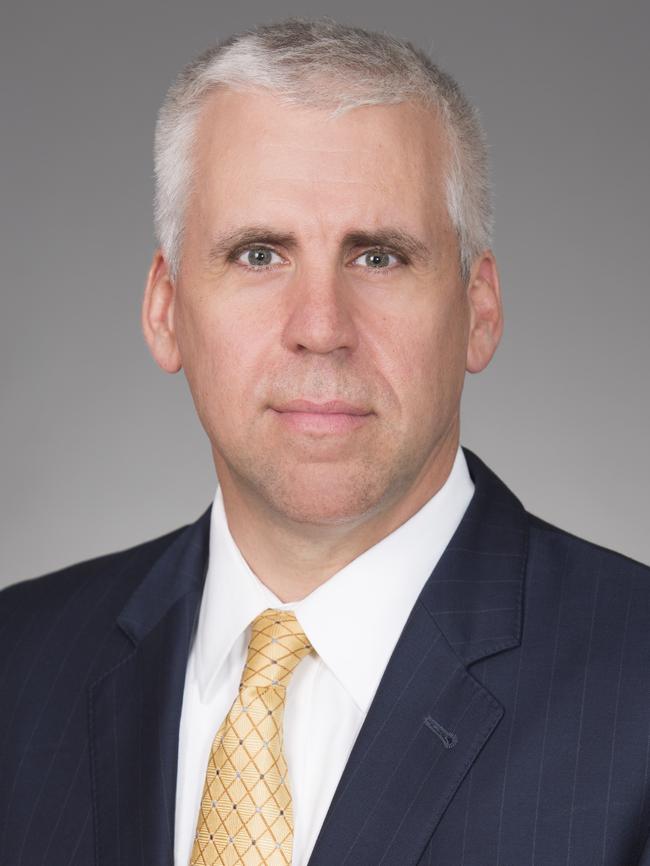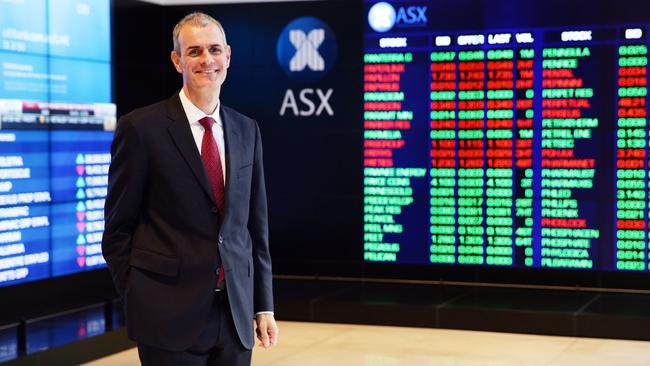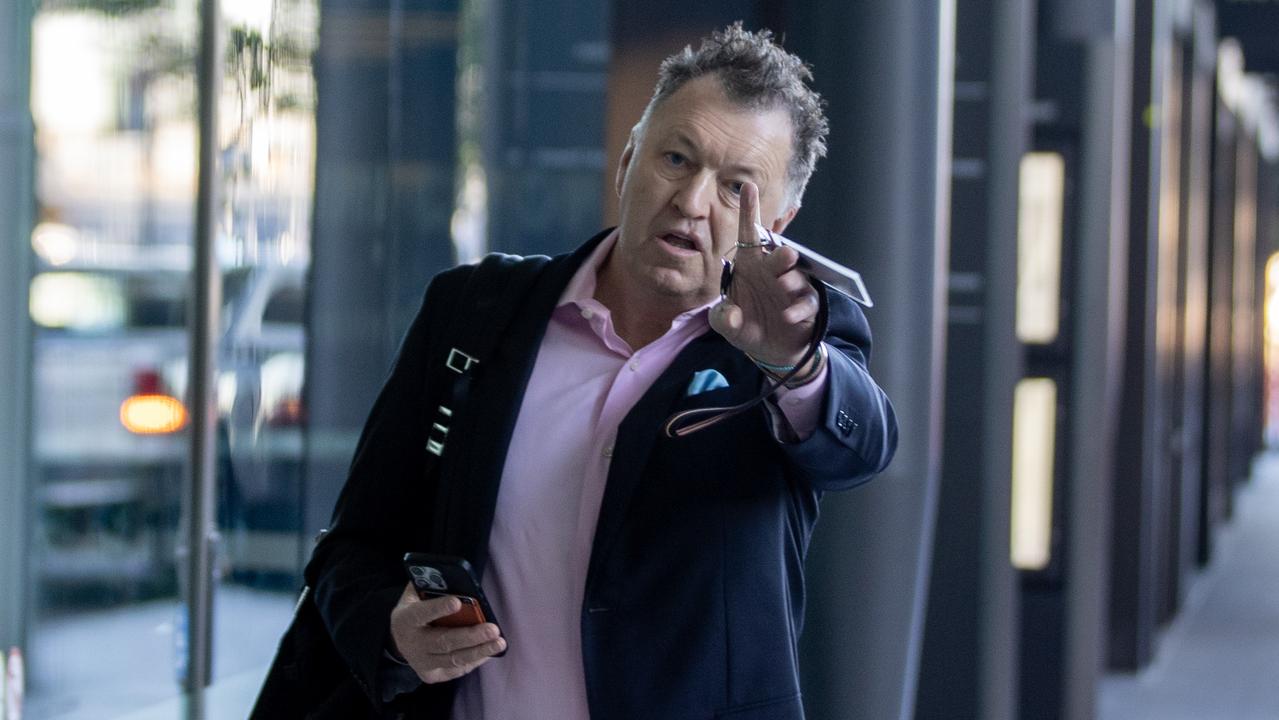Why technological transformation comes at a cost: Oliver Wyman analysis flags overruns and delays
As the ASX endures legal action over a botched tech upgrade, Oliver Wyman’s analysis has found IT overhauls typically experience huge cost overruns and delays of more than two years.

Financial services companies around the world are tackling change and technology upgrade programs at an unprecedented scale, but many grapple with significant cost overruns and multi-year delays.
That’s the view of Oliver Wyman’s New York-based partner Chris DeBrusk, who told The Australian financial services companies often had to alter their technology transformation plans, ahead of completing their execution.
“There will have to be contingency in your plan and you should understand that contingency based on the risk of the plan and how you are approaching it,” he said on a visit to Australia this month. “There is definitely a bell curve of people who execute perfectly (not that many), people that really fail (there’s not that many), and there’s a lot in the middle – they get it done but it’s more painful and it takes more effort and more money than they anticipated. “In many cases that’s a planning issue, it’s not an execution issue – or it’s a bit of both.”
Oliver Wyman’s global analysis has found large technology transformations typically experience a cost overrun of about $1bn and delays of more than two years.
The firm has worked with banks and financial services companies around the world on a string of projects, including assisting UBS with its multi-year integration with Credit Suisse, facilitated by regulators. It also conducted an independent review of events that led to the London Metal Exchange’s dramatic suspension of the nickel market in March 2022.
Mr DeBrusk runs Oliver Wyman’s chief information officer and transformation advisory practice in North America.

Bungled technology overhauls were front and centre in Australia last week, when the corporate regulator kicked off a landmark legal case against market operator ASX for allegedly making misleading statements to investors. The case relates to efforts by the ASX to upgrade its three-decades old CHESS system – the underlying technology for clearing and settlement – initially by drawing on distributed ledger technology. That route was shelved in late 2022.
The legal action alleges the ASX misled investors on the status of the CHESS upgrade in February 2022, given the program was plagued by problems and delays. It later led the ASX to book hundreds of millions of dollars in writedowns.
While not commenting directly on the ASX’s predicament, Mr DeBrusk said market infrastructure players and operators were increasingly seeking to update ageing and legacy technology that was often mainframe-based.
“Now suddenly these organisations are saying we need to modernise our technology infrastructure, modernise the way that we approach building and deploying technology, but we’ve never done it before and so the muscle memory is not there, the knowledge isn’t there,” he added.
“There is this assumption sometimes that the technology is the solution, and technology is not the solution. It’s operating model, ways of working, change methodology and execution, it’s the people, the skills. The technology is the easy part – it’s all the stuff that you’ve got to work around it.
“So organisations that lead with technology do run into problems sometimes. Either the technology doesn’t work, especially if it’s leading edge, but more importantly that’s only part of the problem.”
Mr DeBrusk also highlighted that exchange operators had the additional complexity of dealing with multiple stakeholders, such as stockbrokers, clearing participants and hedge funds.
“The really big customers demand real sophistication, that requires them to have sophisticated technology and ways of working and API interfaces,” he said. “Then they’ve got the smaller customers and they just want you to clear or settle my trade.”
The ASX’s push towards blockchain technology began with then chief executive Elmer Funke Kupper making a strategic investment in 2016 in New York-based Digital Asset Holdings, founded just two years earlier. Also in 2016, ASX’s Mr Funke Kupper, flanked by executive Peter Hiom, decided to upgrade the ageing CHESS technology. The following year it engaged Digital Asset to build the ledger and application for the CHESS replacement system.

Other exchanges such as the Swiss Stock Exchange and Nasdaq were also dipping into distributed ledger technology, with the latter partnering with provider R3.
The use of the technology has had its sceptics, however, including the Toronto Stock Exchange’s operator.
TMX CEO John McKenzie in 2022 outlined detailed work the company had undertaken to research and understand blockchain technology and determine whether it should be employed to run exchanges, trading and clearing houses.
“It’s not fit for purpose. The technology is actually not robust and not fast enough to handle mature, deep, liquid, fast markets,” he said at the time.
The ASX has now dumped the CHESS blockchain experiment and has asked Indian giant TATA Consultancy Services to design and rebuild its underlying technology.
Separately, Mr DeBrusk said some financial services companies were adopting parts of operating models used by critical industries such as airlines and hospitals to enable them to address issues more quickly.
He noted that airlines were heavily reliant on formal checklists for business-as-usual practices, but also to address problems appropriately when issues arose.
“That’s a push across the (financial services) industry to get more into that mentality that is normal for airlines, for nuclear power plants, for hospitals, for other critical infrastructure where people have to work under pressure and very, very fast,” Mr DeBrusk said.
He noted that the scorecard in the financial services sector for working at speed to address challenges and operational issues “was mixed”.
“In some areas of the financial services industry they are very used to working at speed – capital markets, it’s built into the business ... less so in some of the other areas of the banking industry where they just don’t normally operate at the level of speed. Things happen in days, not minutes, not seconds.”
In the local market, Oliver Wyman is currently working with some of Australia’s major banks, although it won’t disclose its customers. The firm assisted the Australian Prudential Regulation Authority’s inquiry into Commonwealth Bank’s compliance and governance failings, which was published in 2018.
Mr DeBrusk noted banks around the world were also going through a process of modernising legacy technology, while also looking at deploying artificial intelligence, predominantly in areas that were not customer-facing.

“These institutions are tackling (change) programs at a size that they have never really tackled before, with the exception of maybe (merger) integrations,” he said. “These are sizes of programs that have never been tackled before, or if they have been they were done 30 or 40 years ago on older technology.
“What the organisations are struggling with … but figuring it out, is how do you do that safely and how do you do it on time and on budget with predictability?”
Westpac has kicked off a project dubbed “Unite” which is aimed at overhauling and simplifying the bank’s technology, including decommissioning some duplicated systems from its purchase of St George Bank more than 15 years ago. A Westpac presentation showed it wanted to cut the number of banker platforms drawn on to assist customers by half and reduce its 11 customer onboarding systems to one.
Oliver Wyman’s research suggests transformation programs by banks and other financial services companies typically have risks including cost overruns and delays. While transformation programs held out the prospect of big gains in value creation, productivity and other measures, a 2024 report by the consultancy found 40 per cent of unsuccessful programs had “severe financial, operational, and reputational repercussions” for the companies undertaking them.
The survey of more than 30 senior business, technology and transformation executives across Australia’s ASX-200 financial sector found their transformation programs offered almost $20bn of “incremental value potential”, but that wasn’t typically realised.
“While there is great opportunity, an expected $5bn of the value uplift will be lost during delivery, and the knock-on potential loss in market capitalisation from transformation failure is even more significant,” the report said.
Investors and analysts are closely watching how the ASX and domestic banks approach technology and transformation programs, given a largely unflattering track record.
ANZ is shelling out a significant sum on thousands of AI product licences from Microsoft, while a transition to its digital platform known as ANZ Plus is being closely monitored, given earlier delays.
Westpac had teething issues with the implementation of its One Bank Platform two years ago, and in 2021 its investment platform Panorama suffered a major outage.
National Australia Bank endured long delays, cost overruns and scope creep when it overhauled its systems as part of a program dubbed NextGen, which started in 2007.
Commonwealth Bank poured $1bn into replacing its core systems in the four years through to 2011, reflecting a doubling of project cost over the period, but positioning the bank as the sector’s technology leader.
Last week, UBS analysts said Westpac’s ability to execute its technology overhaul could prove an earnings tailwind.
“We acknowledge we were too cautious on the market’s belief in Westpac’s ability to execute their IT transformation agenda and drive down costs,” he said.
“We are still in the early innings of delivery.”





